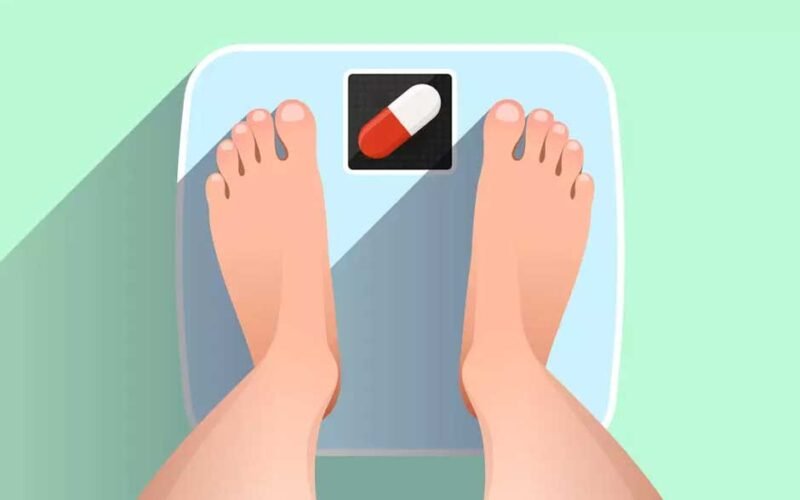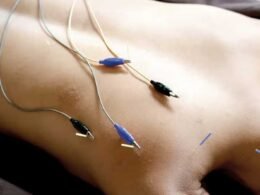In a world inundated with fad diets, generic workout programs, and conflicting health advice, finding a method that genuinely works for your unique body can feel impossible. However, the key to long-lasting success lies in a targeted and customized approach: body composition plans. Unlike traditional fitness programs, these plans are tailored to help you achieve optimal weight loss, muscle gain, or both, depending on your personal goals and starting point.
Understanding Body Composition
Before discussing strategies, it’s important to understand body composition. Simply put, body composition refers to the ratio of fat, muscle, bone, and water in your body. Unlike weight alone, body composition provides a more comprehensive picture of your physical health.
For example:
- A person with a high muscle-to-fat ratio may weigh more but be healthier and leaner than someone with the same weight but a higher fat percentage.
- Focusing solely on weight loss often overlooks the importance of retaining or building muscle, which plays a crucial role in metabolism and overall strength.
This is where body composition plans come in, offering a balanced approach to achieving your desired physique.
Why Personalized Plans Work
One-size-fits-all approaches rarely work because every body is different. Factors such as genetics, age, activity level, metabolic rate, and dietary habits play a significant role in how your body responds to changes in diet and exercise.
A personalized body composition plan considers:
- Your Baseline Metrics:Body fat percentage, muscle mass, bone density, and metabolism.
- Your Goals:Whether you aim to lose fat, gain muscle, or maintain your current weight while improving overall body composition.
- Lifestyle Factors:Including your work schedule, stress levels, sleep quality, and personal preferences for diet and exercise.
These plans are dynamic, allowing for adjustments as your body evolves, ensuring continuous progress.
Steps to Transform Your Body Composition
- Assess Your Starting Point
To create an effective plan, start with a full-body analysis. Many gyms, clinics, and personal trainers offer body composition assessments using tools such as:
- Bioelectrical Impedance Analysis (BIA):Measures body fat percentage and muscle mass.
- DEXA Scans:Provides a detailed breakdown of body composition.
- Skinfold Measurements:A budget-friendly method using calipers to measure fat.
Knowing your baseline metrics allows you to set realistic goals and track progress accurately.
- Set Realistic and Specific Goals
It’s not enough to aim for “weight loss” or “muscle gain.” Be specific about your objectives. Examples include:
- Reducing body fat by 5% over three months.
- Increasing lean muscle mass by 10 pounds in six months.
- Achieving a balance of 15% body fat while maintaining your current weight.
Specific goals make it easier to design a plan and measure success.
- Build a Tailored Nutrition Plan
What you eat significantly impacts your body composition. A personalized nutrition plan is designed around your caloric needs, macronutrient ratios (protein, carbs, and fats), and lifestyle.
Key considerations:
- Caloric Intake:Determine whether you need a caloric deficit (for fat loss) or surplus (for muscle gain).
- Protein Consumption:Protein is essential for muscle repair and growth. Aim for 1.6–2.2 grams of protein per kilogram of body weight.
- Carbohydrates and Fats:Carbs provide energy for workouts, while healthy fats support hormonal balance. Adjust these based on your goals and activity levels.
- Micronutrients:Ensure you’re consuming enough vitamins and minerals for optimal recovery and energy levels. If you’re navigating autoimmune challenges, Carnivore Snax takes a closer look at how an all-meat approach may help simplify your nutrition plan, reduce inflammation, and support body composition through clean, high-quality protein.
A registered dietitian or nutritionist can help craft a plan tailored to your goals and dietary preferences.
- Create a Progressive Exercise Program
Exercise is critical for improving body composition, but it’s not just about burning calories. A balanced workout program should include:
- Resistance Training:Build lean muscle through weightlifting or bodyweight exercises. Focus on progressive overload—gradually increasing the weight or intensity of exercises.
- Cardio Workouts:High-intensity interval training (HIIT) and steady-state cardio both contribute to fat loss and cardiovascular health.
- Functional Movements:Incorporate exercises that mimic real-life activities to improve mobility and prevent injuries.
- Rest and Recovery:Schedule rest days to allow your muscles to repair and grow.
Personal trainers or online coaches specializing in body composition plans can design a program tailored to your fitness level and goals.
The Role of Lifestyle in Body Composition
While diet and exercise are the foundation of any body composition plan, other lifestyle factors are equally important:
- Sleep:Poor sleep disrupts hormones like cortisol and ghrelin, leading to increased fat storage and hunger. Aim for 7–9 hours of quality sleep per night.
- Stress Management:Chronic stress triggers the release of cortisol, which promotes fat storage, especially around the abdomen. Practice mindfulness, yoga, or deep breathing exercises.
- Hydration:Water plays a key role in muscle function, metabolism, and fat loss. Drink at least 8–10 cups daily, more if you’re active.
- Consistency:Results take time. Stick to your plan and avoid drastic changes unless necessary.
Benefits of a Personalized Body Composition Plan
When executed correctly, body composition plans offer numerous advantages, including:
- Sustainable Results:Unlike quick fixes, these plans focus on gradual changes that you can maintain long-term.
- Improved Health:Reducing fat and building muscle enhances metabolic health, lowers the risk of chronic diseases, and boosts physical performance.
- Enhanced Appearance:Achieve a toned, lean, and muscular look tailored to your aesthetic goals.
- Boosted Confidence:Seeing tangible results can significantly improve your self-esteem and motivation.
Common Mistakes to Avoid
- Focusing Solely on the Scale:Weight alone doesn’t reflect muscle gain or fat loss. Use body composition tools to track progress more accurately.
- Skipping Strength Training:Cardio alone won’t build muscle. Resistance training is crucial for a balanced plan.
- Overcomplicating Diets:Avoid restrictive diets that are hard to sustain. Opt for balanced, enjoyable meals.
- Neglecting Recovery:Overtraining can lead to burnout and hinder progress. Listen to your body.
Tools and Technology to Enhance Your Journey
Modern technology can make your body composition transformation more efficient:
- Wearable Devices:Track your steps, heart rate, and sleep quality with fitness trackers.
- Mobile Apps:Use apps to log meals, workouts, and progress. Examples include MyFitnessPal, Cronometer, and Strong.
- Smart Scales:Measure body fat percentage and muscle mass from the comfort of your home.
Success Stories: Real-Life Results
Real-life examples showcase the power of personalized body composition plans:
- John’s Journey:A busy professional, John lost 10% body fat in 6 months by following a tailored nutrition plan and working with a trainer three times a week.
- Sarah’s Transformation:After years of crash diets, Sarah gained 8 pounds of muscle and reduced her body fat by 6%, boosting her energy levels and confidence.
- Mike’s Comeback:A former athlete, Mike regained his fitness by following a structured plan that helped him build strength and shed excess fat.
These stories highlight how personalized plans can lead to life-changing results.
Start Your Transformation Today
Transforming your body composition isn’t just about looking better—it’s about feeling stronger, healthier, and more confident. By investing in a personalized body composition plan, you can achieve sustainable weight loss, muscle gain, or a combination of both.
Ready to take the first step? Whether you’re a beginner or looking to refine your fitness journey, creating a tailored plan with the guidance of experts ensures success.
Your journey to a healthier, fitter you begins now.










